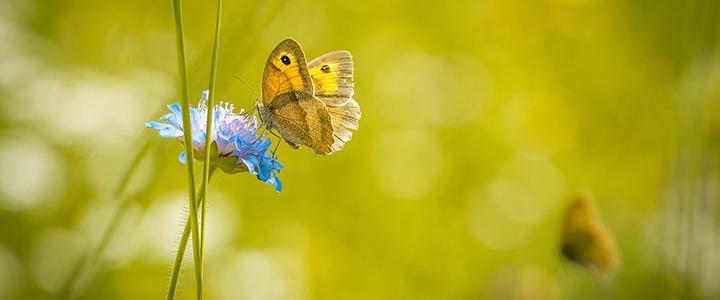
April 2019: Xeriscaping: Natural Lawns Are the New Green
Summer’s rising temperatures often coincide with rising outdoor water use, primarily due to an increase in lawn and landscape watering. Depending on the region, homeowners use between 30% and 60% of their water outdoors. Experts estimate that 50% of the water we use outdoors goes to waste from evaporation, wind or runoff due to overwatering.
The U.S. EPA WaterSense Program details many ways that homeowners with automatic irrigation systems, and those who manage their lawns and gardens manually, can drastically cut back their water use. However, an alternative that has gained a lot of traction over the last couple of years is to buck the traditional manicured, lush green lawn for something more wild and natural. It’s called “xeriscaping.”
Xeriscaping is a landscaping philosophy that uses as many native, drought-resistant plants as possible and arranges them in efficient, water-saving ways. A properly designed and implemented xeriscape can significantly reduce (but not eliminate) maintenance, and it has been estimated that it can reduce water use by up to 64%. The “seven principles” of xeriscaping are: climate-appropriate plant selection; superior garden design; efficient, non-wasteful irrigation; extensive mulching; minimal turf areas; conservation of water in soil; and proper maintenance.
Xeriscaping was originally developed for drought-afflicted areas, but has become a popular alternative to traditional lawns across the nation as water conservation becomes more of a priority. With New Hampshire experiencing drought conditions over the last few summers and water use restrictions being put in place, converting your lawn to something that drastically reduces water use would take away that worry. Xeriscaping boasts the following benefits:
- Saves water.
- Less maintenance.
- No fertilizers or pesticides.
- Improves property value.
- Less fossil fuel consumption.
- Supports pollinators.
There is a wealth of information in New Hampshire to help you get started on this low-maintenance lawn and landscape conversion. Native vegetation is adapted to the northeast climate and requires little or no watering once established. The UNH Cooperative Extension Home and Garden webpage provides extensive guidance related to native landscape design and maintenance, including a list of drought-tolerant plants in New Hampshire. You can buy native tree and shrub saplings grown right in New Hampshire from the N.H. State Forest Nursery or check with your local county conservation district to find out when your county holds its annual tree, shrub and bulb sales.
Some things to consider before designing and implementing a xeriscape lawn:
Check for invasives. Invasive plants can crowd out their native neighbors, so make sure to weed them out before getting started.
Draw up your plans. Minimize lawn areas to only those areas you actually use for play or sitting and replace with native vegetation, wildflower meadows, or some type of groundcover. If you still would like to be able to walk through these areas, think about planting a ground cover that can withstand some foot traffic.
Make sure to mulch. Mulch eradicates weeds eliminating competition for available water and nutrients, minimizes evaporation, and adds nutrients to the soil during decomposition.
Keep it on the walkway. Avoid using non-porous plastic, rubber, gravel, marble chips and stones as mulch. In sunny locations these materials act as heat sinks, drying the soil beneath. Restrict these items to walkways.
And finally, check the rule books. Make sure there are no city or town ordinances, or homeowners’ association rules, that would prohibit your planned landscape.
By planting native plants and grasses adapted to our environment and sticking to a few simple guidelines, you can achieve a beautiful landscape that requires less work and less water, leaving more time for swinging in the hammock and listening to the birds.
This GREENWorks article can be also be found in our document library.




